East Orange Train Station
History
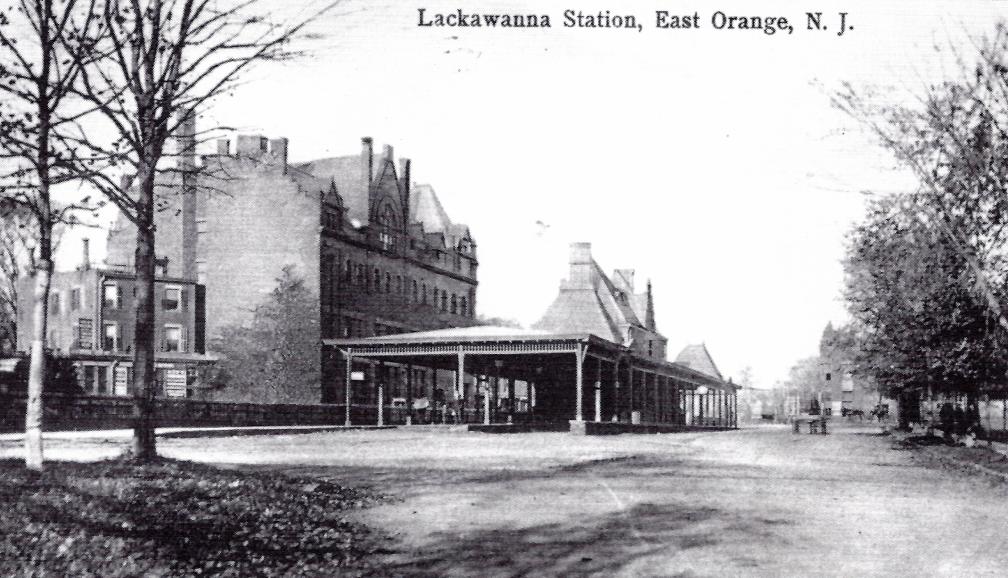
The Morris & Essex Railroad used passenger
cars drawn by horses along the tracks from 1836 until 1838 when
the company was bought by the Delaware, Lackawana and Western
Railroad which replaced them with the new steam powered trains.
Service went from Orange to Newark at the time, but it was soon
extended further west to Morristown and beyond. The above view
shows the East Orange Station as it appeared when it was built in
1883. The tracks ran along the ground, crossing streets, until
the tracks and stations were elevated in 1922.
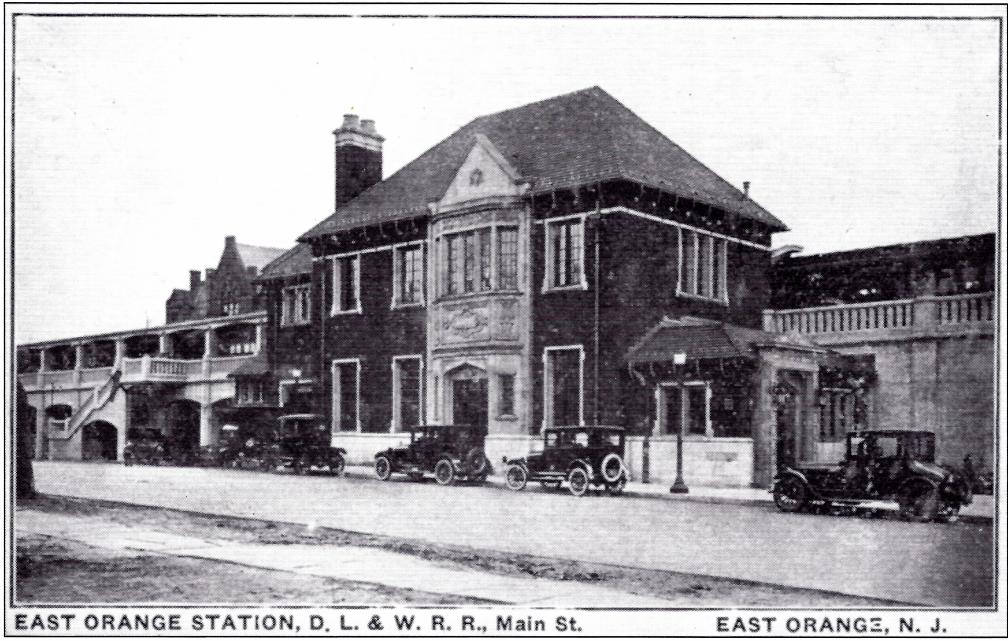
The city of East Orange, then
guided by Mayor Charles H. Martens, wanted the tracks lowered,
subway fashion, but the Delaware, Lacakwana and Western Railroad
decided to elevate the tracks instead. This was completed in
1922.

Brick Church Station was
originally constructed in 1864 by Matthias Ogden Halsted, who
donated it to the Morris & Essex Railroad for use with their
horse drawn trains going through East Orange from Orange to
Newark. The station in the photo was rebuilt in 1880 and remained
at ground level until the train was elevated in 1922 by the
Delaware, Lackawana and Western Railroad for their steam powered
locomotives. In 1930, the train was electrified through the
influence of West Orange's Thomas Edison, who rode as a passenger
aboard the first electrified train.
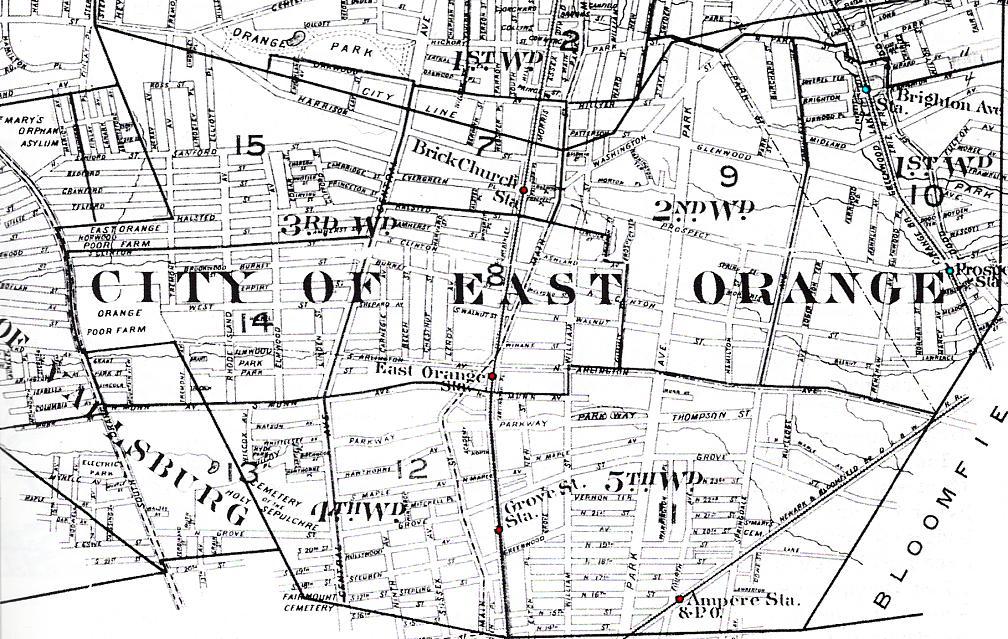
As the above 1904 Map of East
Orange shows, two more railroad stations were added in 1901 and
opened to the public in 1903, the Grove Street Station and the
Ampere Station and Post Office, marked by red dots at the bottom
of the map.
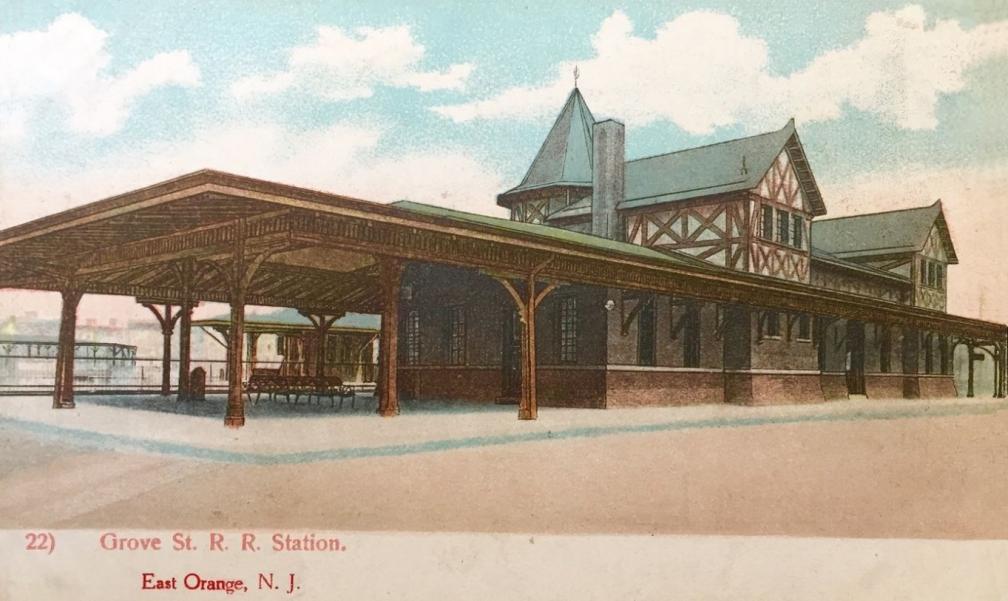
We recently acquired a copy of
this colorized post card circa 1905, showing the glamourous side
of the Grove Street Station. It was sent to us on 02/05/17 by Tom Geiger, who has been collecting Post Marks and
donating them to our collection. As you
can see from the Ampere Station on the 1904 map, it was a common
practice for railroad stations to house post offices on the
premises. The large building in the foreground is for the
east-bound tracks - commuters going to work in Newark and New
York. The smaller building on the other west-bound side of the
tracks was where they got off to return home to East Orange.
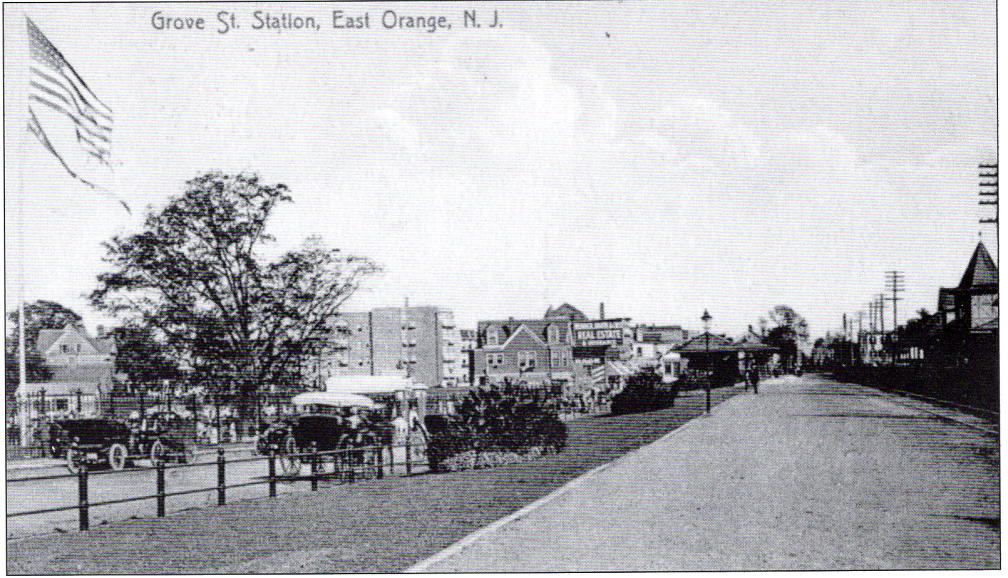
Again, looking to the east, the
flag shows the location of Oval Park at the time this post card
photo was made, c. 1906. There were both horse pulled and
horseless carriages to accomodate commuters of the time along
Eaton Place.
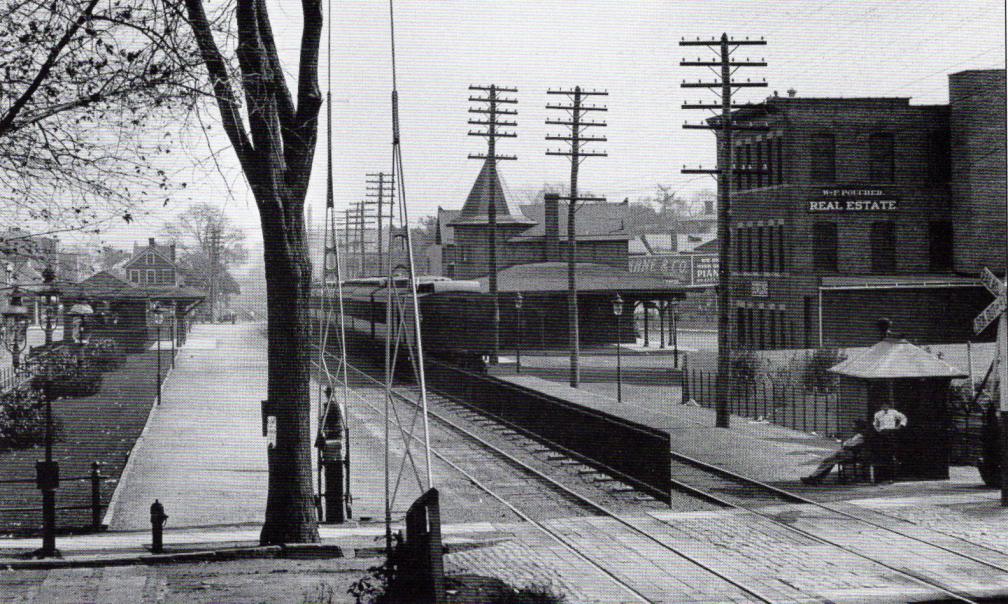
A regular photo (not glamourized
for the post card trade) shows the dangerous Grove Street
crossing in the foreground. When the tracks were finally elevated
above street level in 1922, a second story was added to the large
East-bound station house, but the whole station was later
eliminated and torn down.
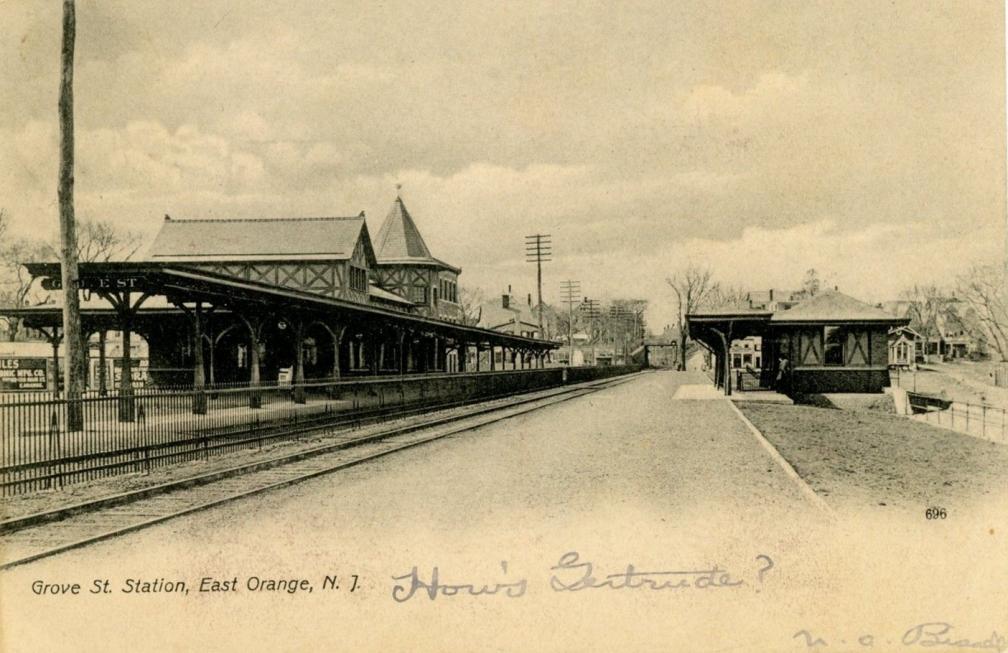
The above postcard was dated
1906, and shows the west-bound view of the Grove Street Station.
In the earliest days, before 1890, The Grove Street location was
simply known as "The East Orange Station." The name was
changed in 1890 when the town began planning the new city hall
further west.







